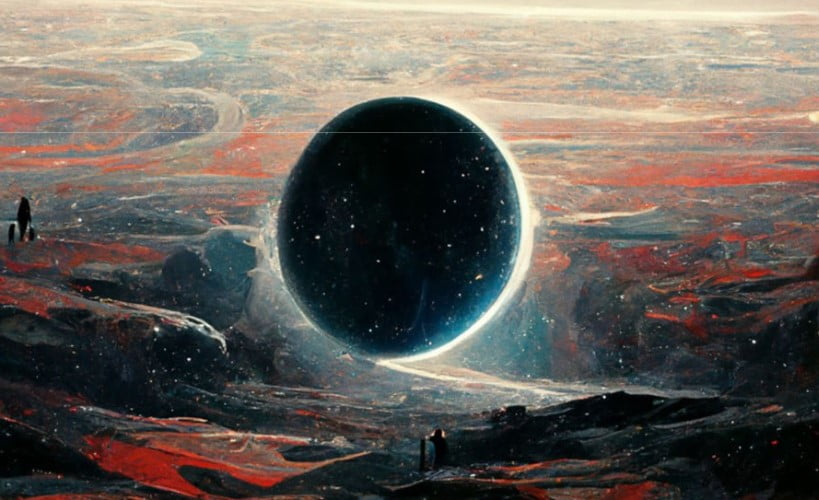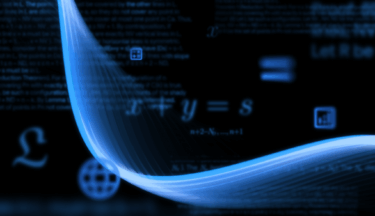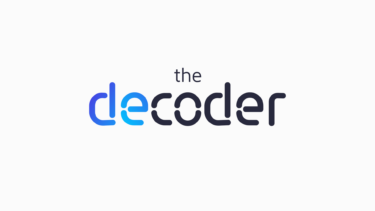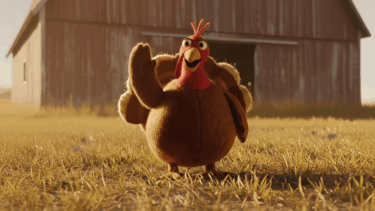IT professional Kevin Hess uses AI-generated motifs to illustrate a science fiction classic over hundreds of pages. An impressive project that confirms that AI image generators can turn more people into creators of art - although Hess does not consider himself an artist.
In 1937, the British author Olaf Stapledon published his science fiction novella "Star Maker." The main protagonist leaves his body, thus being able to visit outer space and other planets and merge his mind with those of other beings.
The group of star travelers becomes larger and larger, spreading throughout the universe. The book deals with philosophical issues such as the nature of life, birth, decay and death, as well as the relationship between creation and the Creator.
Star Maker is also the favorite book of IT professional Kevin Hess. When he heard about AI image generators like DALL-E or Midjourney, he had the idea to illustrate the extensive novella and present it in a more contemporary way.
"I’ve been trying to get people to read this book for something like fifteen years. So when I finally found a way to bring the novel to life in a way more compatible with the way people consume media these days, I jumped into it," Hess tells me.
Star Maker avoids the weaknesses of AI image generators
One weakness of current AI image generators is their lack of consistency: similar image prompts can lead to very different results. This makes it difficult to use the generators for coherent stories.
For the Star Maker narrative, Hess says this wasn't a problem: "Unlike most literature, Star Maker is unique in that there are hardly any characters and the exact visual details of what you’re witnessing aren’t exactly important. [....] So the things that AI art isn’t good at – repeating characters, scene blocking, action - weren’t necessary at all for Star Maker."
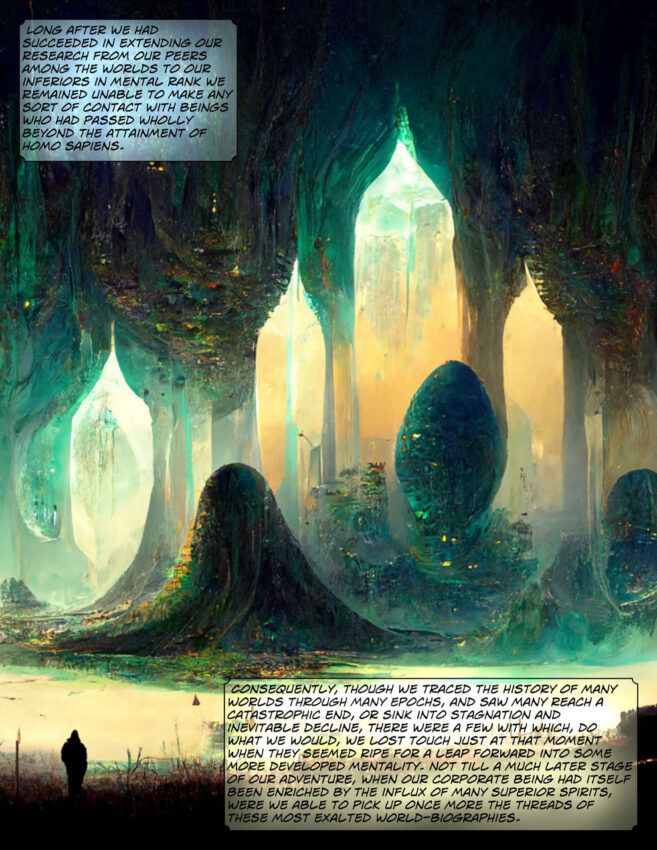
Hess used the Midjourney image system in default mode, which already generated what he thought was a suitable style for Star Maker. This way he didn't have to develop his own image prompts and also had some visual consistency in the illustrations.
Occasionally, he used Photoshop for enhancements, especially for the colors to make the text boxes more legible. For the layout, he used Comic Life 3. Half a page of the novella corresponds to about three comic pages. For each passage of text to be illustrated, Hess used up to six image prompts. In total, he estimates, he needed up to 500 image prompts.
The finished illustrated novella is 706 pages long and was created in about 100 hours, which is about 8.5 minutes per page. An insane speed that could only be achieved thanks to AI automation.
AI generators decouple the idea from the craft
In any case, the work would not have been possible without AI image generators, says Hess. That's partly because he himself "can't draw at all," he says. And even if he could, a graphic novel on this scale would be "a life's work," says Hess.
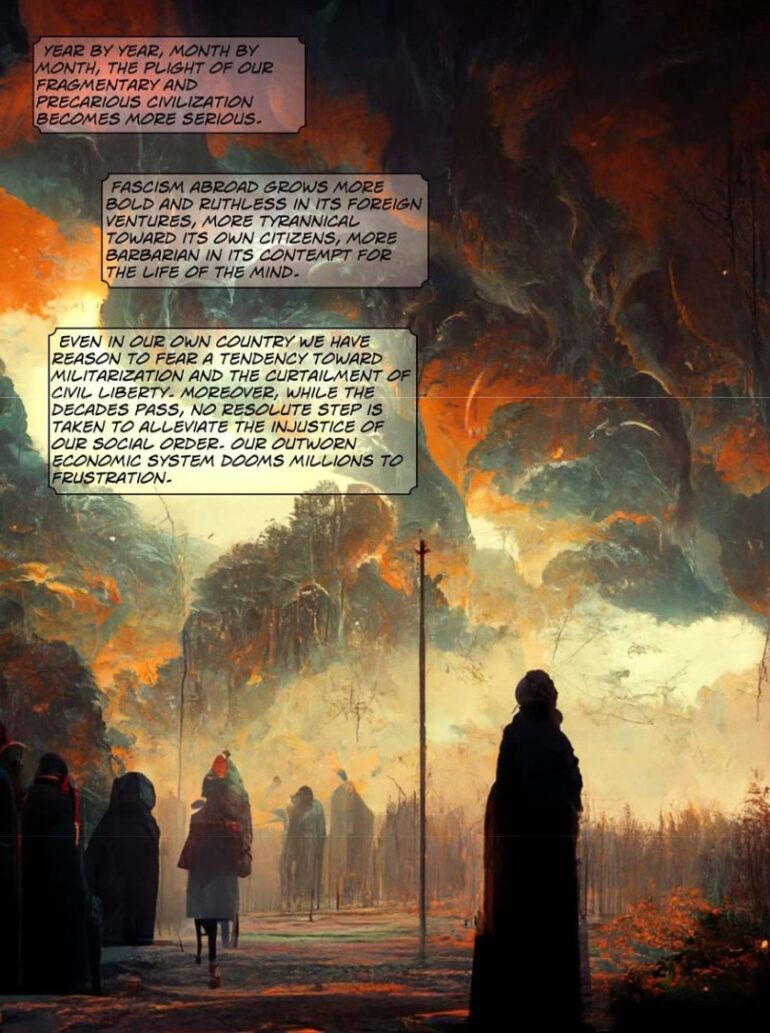
Against the backdrop of the current intense debates about the impact of AI on artists, Hess takes his graphic novel out of the firing line, saying that no publisher would ever have invested in this project. In this respect, there would never have been a budget for human artists whose work could have replaced the machine. From Hess' standpoint, AI was the only solution to create this work.
Hess, therefore, does not see himself in competition with artists. He doesn't even consider himself an artist, as impressive as his work may be. "It's the machine. I wouldn't call myself an artist," says Hess.
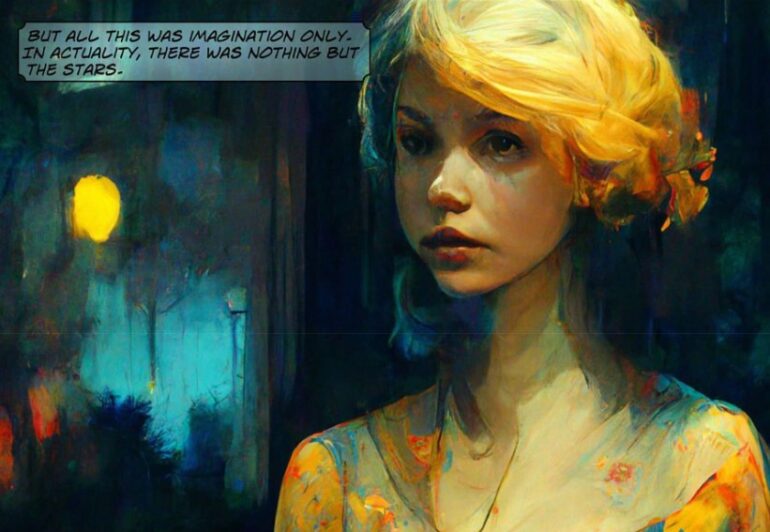
Kevin Hess' graphic novel of Star Maker will be released on September 20 on Amazon and Google Play.
Read the full interview with Kevin Hess
You visualized "Star Maker" by Olaf Stapledon with AI. How did you come up with the idea?
When I learn a new tool, one of the first things I start doing is thinking of unique things I can do with it – things someone else hasn’t thought about doing, or at least most people haven’t thought of. After all, there’s no point in doing something exactly like what everyone else is doing.
I saw a lot of writers learning and using Midjourney/Stable Diffusion as a means to write the original stories and comics they wanted to create, but didn’t have the artistic skills to do so. In other words, they had a story to tell, and finally had the means to tell it. Those were probably stories those writers had been sitting on for years, by people desperate to write something. I didn’t have anything like that.
But then I realized that these artists were using the sudden ubiquity of art to create graphic novels specifically. The mechanism that AI automation sped up was the raw generation of art. In my estimation, when it comes to creating story-driven art involving human beings and action, is a modest improvement at best right now over traditional artists (and most of the time, turns pleasant creative work into a frustrating cycle of messing with prompts, cropping, creative editing, and overheated GPUs.)
So while the newly-minted comic artists were learning how to wrangle prompts in order to pan for usable specks of digital gold among the dross, I realized that the strengths of AI art generation – rapid, nonspecific art creation – was perfect for the type of story Star Maker is.
Unlike most literature, Star Maker is unique in that there are hardly any characters and the exact visual details of what you’re witnessing aren’t exactly important. In a normal novel, the main character might pick up a briefcase, or meet with a stranger, and you would have to make that character visually consistent from page to page, and have the visual action reflect the script of the book.
Contrary to this, the aesthetics and visuals in Star Maker are secondary to the philosophical message of the book. What the Other Men look like isn’t very important, more so that they are a civilization like our own with its own struggles and personal failures, and its own end. Same with the Icthyoids, or the Plant-Men, or the Star Maker.
The scale of the novel is so unimaginably huge that the art serves as much as a visual and sensory backdrop to the story as it does as a traditional illustration. The entire fate of two billion (story) years of human evolution, which fit into his other landmark novel Last And First Men, is summarized in Star Maker in something like half a page. So the things that AI art isn’t good at – repeating characters, scene blocking, action - weren’t necessary at all for Star Maker.
That, and I’ve been trying to get people to read this book for something like fifteen years. So when I finally found a way to bring the novel to life in a way more compatible with the way people consume media these days, I jumped into it.
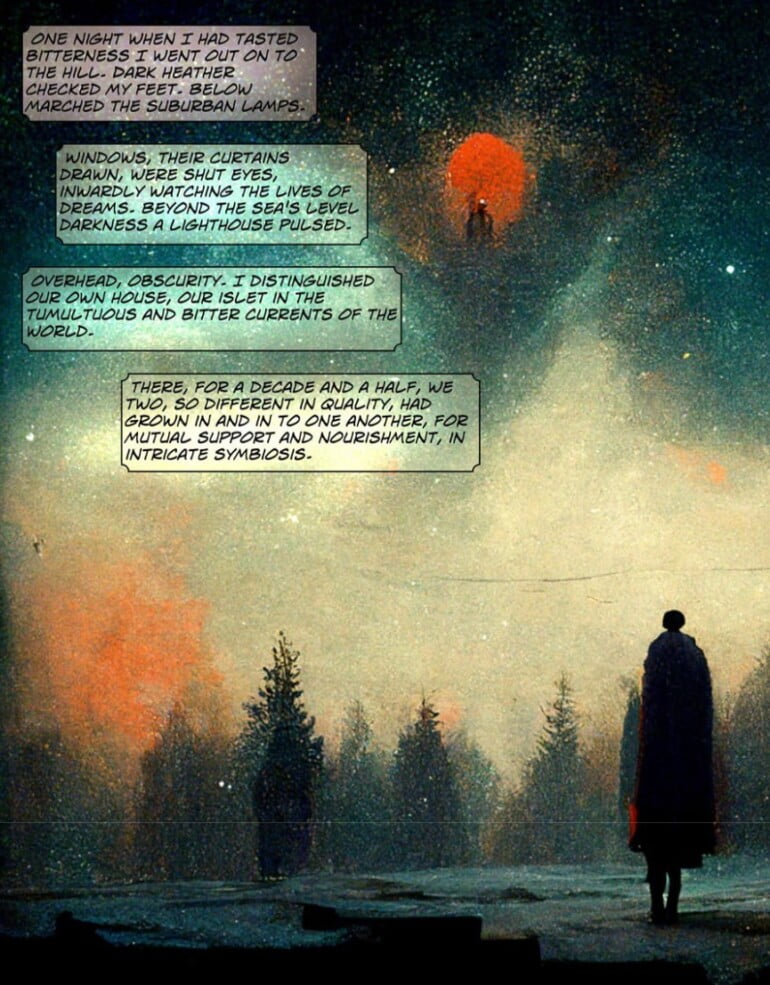
What tools did you mainly use - what was your workflow?
To generate the art, I used Midjourney. Another one of the happy coincidences with this project was that Midjourney’s ‘default’ art style – what you get if you just start typing words in without any direction – was perfect for Star Maker. So I didn’t have to spend time trying to develop a unique prompt series to keep the visuals similar.
I’d do about half of a novel’s page at a time, which translated into about 3 full comic pages. After rereading the part and getting an idea of what I wanted to do, I’d put in a queue of about 5-6 image prompts and let Midjourney grind on that.
The lettering and layout were done in Comic Life 3. Once the narrator’s viewpoint leaves Earth, I switched mostly to full-page art – mostly because the art was so great-looking that it seemed like a shame to put it in a panel. While Midjourney was working on my prompts, I laid out the text panels and broke up the long paragraphs into readable panels.
I used Photoshop sparingly for minor touch-ups – a little shading or burn here or there – but mostly to color enhance the text panels in order to improve readability. Blank-white text panels would have been a lot less time-consuming, but I didn’t think they looked as good. So that was another several hours worth of mindless work.
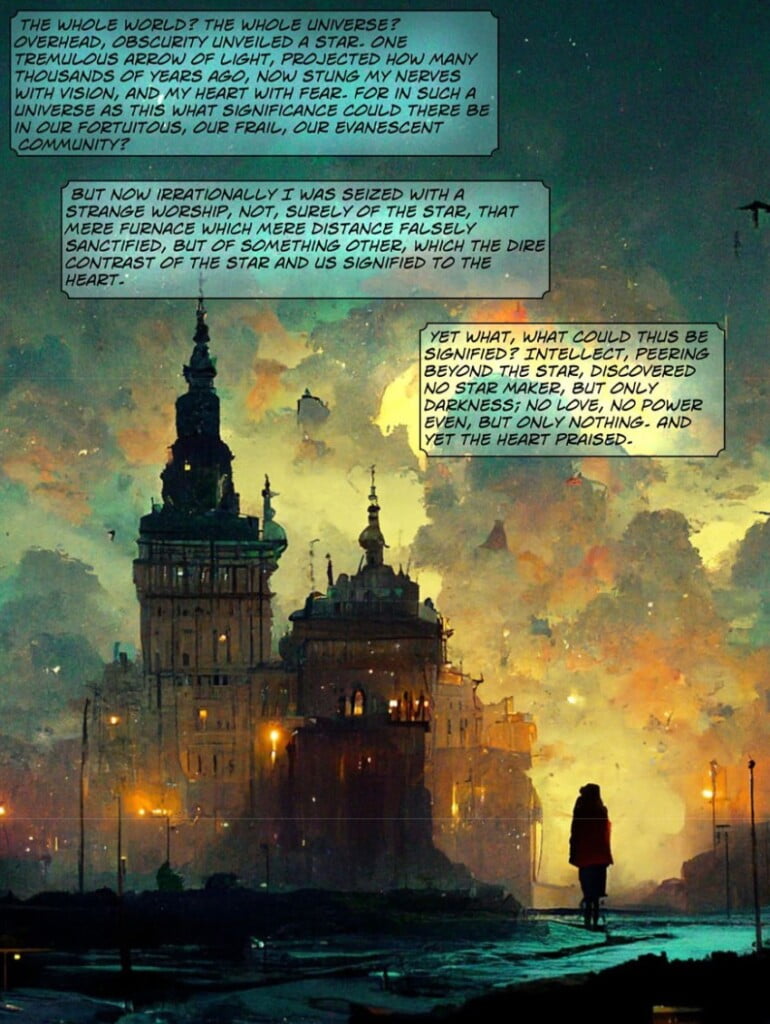
How much time did you invest per page?
I guess it broke down to about 8.5 minutes per page overall from zero to the first draft. At first, I intended to only put in one illustration per page, and then a full blank white page of text, to come up with a pseudo-illustrated graphic novel. Shortly after starting, I realized that the project should take advantage of Midjourney’s willingness to create massive amounts of really nice-looking art on command, and subsequently broke up the text much more into a full-on graphic novel format. So by virtue of creating a lot of pages and having Midjourney responsible for most of the heavy lifting, it brought the average time down a lot.
Again, most artists shouldn’t have anything to worry about at the moment – this rate isn’t going to be realistic for about 99.9% of projects.
Approximately how many prompts did you need? Do you have any tips for someone planning a similar project?
Maybe 400-500?
Tips? Don’t kid yourself – this is still going to be a lot more work than it sounds. That’s all I can say.
Could you also imagine a print version besides the Google Play version?
I can’t imagine how much it would cost to print, but boy, it would be a great-looking coffee table book. If anyone can make this happen, let me know.
Do you know how to draw - could you have done a piece like this without AI?
This would be a lifetime project for anyone. No, I can’t draw at all.
First art platforms are taking AI images offline. You work in the IT sector, so you're not an artist it seems, at least not by profession. And yet, you were able to make this artful project happen. One could say your case is exactly what trained artists and designers are afraid of - the idea counts more than the artistic ability. How do you assess that?
I think there are several interesting factors in play here. In this particular case, the amount of work taken away from artists was precisely nil – there’s no way a project like this would ever be green lit by anyone in any publishing industry ever, so there was never a budget there in the first place.
A lot of people’s projects are like that. I used Midjourney to come up with the cover art for the next album for my band, but I never would have paid an artist to do that one way or another.
Do you feel this is your art, your work - or it is the art of the machine you are using?
It’s the machine. I wouldn’t call myself an artist.

If you had the budget - would you rather work with human illustrators or keep your workflow? It would be great if you justify your answer.
Depends on the project. For this project or anything with similar needs – needs a massive quantity of art, details aren’t that important, etc. – I’d definitely use AI art. But for needs like this, the artist alternative would be looking through portfolios and choosing art that looks relatively the same, or offering ‘exposure’ details to artists who are already planning on creating some piece of art on their own that’s similar to my needs anyhow. And in that case, it’s not all that amazing of a deal for artists anyhow.
If I were doing anything traditional with a budget – a normal comic book with characters and specific plot points to hit and stuff – 100% I’d rather work with traditional artists. I might insert AI elements into the workflows in order to handle the boring stuff – backgrounds of unimportant places, etc., but real artists would be involved in the hard parts. I’m sure many production artists with a deadline would be happy to relegate the easily replicable parts of drawing to an AI and finish by 3 pm rather than pulling overtime drawing nondescript forests and such.
And isn’t that the point of AI automation in the first place?
